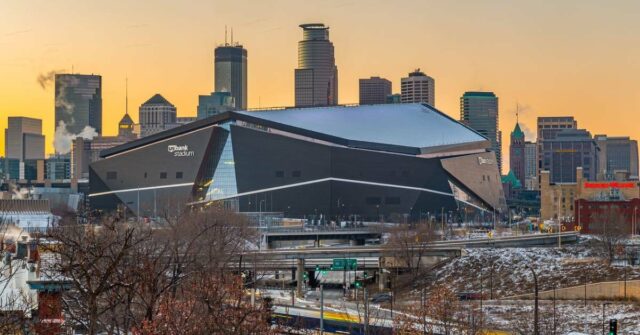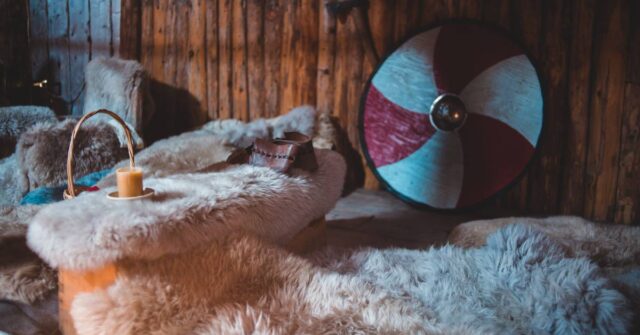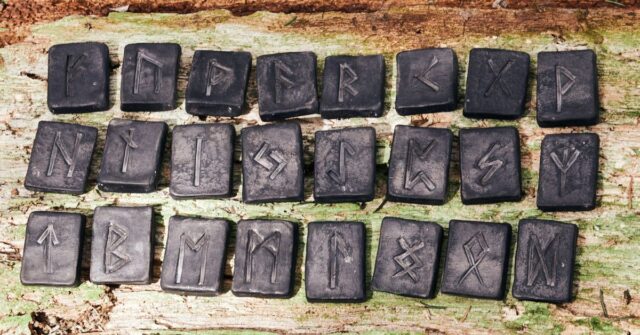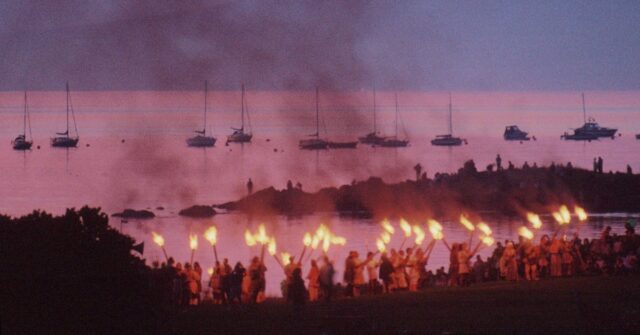The Minnesota Vikings are a professional football team based in Minneapolis, Minnesota. They joined the NFL in 1960 as an expansion team and played their first season in 1961. Since then, the team has become an integral part of the NFL landscape and the broader Minnesota sports culture.
The Vikings have a rich history filled with success, struggle, and unforgettable moments. This article delves into the founding and early history of the Vikings franchise, exploring the team’s origins, key personnel, achievements, and legacy.
The Birth of the Vikings
Establishing an NFL franchise is a complex process involving numerous decisions and challenges.
In this section, we will delve into the events leading up to the creation of the Minnesota Vikings, from securing the franchise to selecting the team’s name and visual identity.
Securing the NFL Franchise
The process of bringing an NFL franchise to Minnesota began in the late 1950s when a group of local businessmen, led by Bill Boyer, Ole Haugsrud, H.P. Skoglund, and Max Winter, decided to pursue a professional football team for the state.
After a series of negotiations with the NFL, the group was awarded the league’s 14th franchise on January 28, 1960. The official announcement came on February 15, 1960, establishing the Minnesota Vikings as the NFL’s newest team.
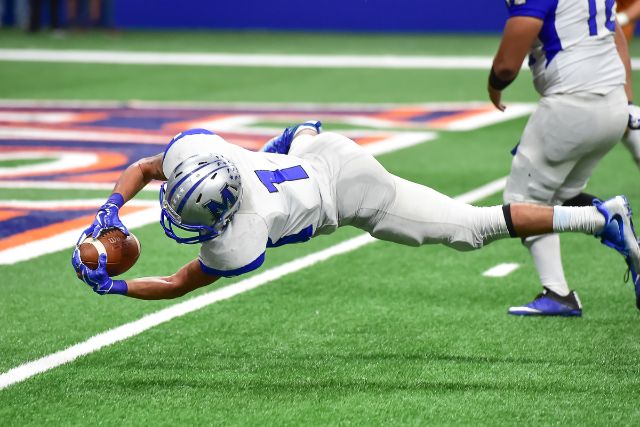
Choosing the Team Name
The ownership group sought a name that would reflect Minnesota’s strong Nordic heritage and create a sense of regional pride. After considering several options, they settled on the name “Vikings” to embody the fierce, adventurous spirit of the ancient Norse seafarers and warriors.
Logo and Uniform Design
The team’s original logo, designed by Karl Hubenthal, featured a Viking warrior’s profile adorned with a gold horned helmet and a flowing purple cape.
The Vikings’ uniforms were designed with purple jerseys, white pants, and gold trim to represent the royal colors of ancient Scandinavian kings.
Early Management and Coaching
The early years of a sports franchise are crucial in establishing its long-term success. In this section, we will examine the first ownership group of the Minnesota Vikings, as well as the coaching staff they assembled to guide the team through its formative years.
First Ownership Group
The initial ownership group of the Minnesota Vikings consisted of Bill Boyer, Ole Haugsrud, H.P. Skoglund, and Max Winter.
As the principal owners, they played an instrumental role in laying the foundation for the franchise and assembling the team’s first roster and coaching staff.
Norm Van Brocklin: The First Head Coach
The Vikings’ first head coach was Norm Van Brocklin, a former NFL quarterback and a member of the Pro Football Hall of Fame.
Known for his strong leadership skills and football acumen, Van Brocklin was tasked with assembling a competitive team from scratch and developing a winning culture in Minnesota.
Coaching Staff and Initial Roster
Van Brocklin quickly assembled a coaching staff to help guide the team during its inaugural season. Among the initial staff were assistants such as Jerry Burns, who would later become the Vikings’ head coach.
The team’s first roster featured a mix of seasoned veterans and talented rookies, including quarterback Fran Tarkenton, who would become one of the franchise’s most iconic players.
The Inaugural Season: 1961
The first season of any sports team is filled with excitement, challenges, and learning experiences. In this section, we’ll explore the notable events and performances that defined the Minnesota Vikings’ inaugural season in the NFL.
Notable Draft Picks
The Vikings’ first NFL Draft in 1961 was highlighted by the selection of Tommy Mason, a running back from Tulane, as their first overall pick.
Other notable selections included Hall of Fame quarterback Fran Tarkenton in the third round and defensive tackle Jim Prestel. These early draft picks would help lay the foundation for the team’s future success.
Early Season Highlights
In their first regular-season game on September 17, 1961, the Vikings stunned the football world by defeating the Chicago Bears 37-13 at Metropolitan Stadium.
Rookie quarterback Fran Tarkenton, coming off the bench, led the team to victory with four touchdown passes. This auspicious start created a sense of optimism for the young franchise.
End-of-Season Performance and Awards
Despite some early success, the Vikings finished their inaugural season with a 3-11 record. While it was a difficult first year, the team showed glimpses of promise with several standout individual performances.
Fran Tarkenton was named the NFL’s Rookie of the Year, setting the stage for a Hall of Fame career.
Development of the Team in the 1960s
As the Minnesota Vikings continued to grow and evolve, the team began to establish its identity and build a winning tradition.
In this section, we will discuss key roster moves, division realignment, and the emergence of the Vikings as a dominant force in the NFL.
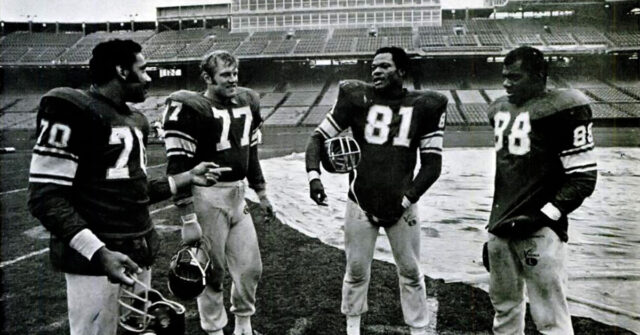
Key Acquisitions and Trades
Throughout the 1960s, the Vikings continued to build their roster with savvy draft picks, trades, and free-agent signings. Some key acquisitions included defensive end Carl Eller, defensive tackle Alan Page, and safety Paul Krause.
These moves helped establish a strong core of players that would become the backbone of the team’s success in the coming years.
Transition to the NFL Central Division
In 1967, the NFL realigned its divisions, and the Vikings moved from the Western Conference to the newly formed Central Division.
This change placed the team in the same division as the Green Bay Packers, Chicago Bears, and Detroit Lions, setting the stage for intense rivalries that continue to this day.
Building a Winning Tradition
By the late 1960s, the Vikings had become a dominant force in the NFL, consistently posting winning records and making playoff appearances.
The team’s success was built on the foundation of a suffocating defense, a strong running game, and the leadership of coach Norm Van Brocklin and his successor, Bud Grant.
Bud Grant Era: 1967-1983
The arrival of head coach Bud Grant marked a turning point in the history of the Minnesota Vikings. In this section, we’ll explore Grant’s impact on the team, his coaching philosophy, and the team’s achievements during his tenure
Coaching Philosophy and Impact
Bud Grant, a former player and successful coach in the Canadian Football League, was hired as the Vikings’ head coach in 1967. Grant’s no-nonsense approach and emphasis on discipline, fundamentals, and teamwork transformed the team into a perennial contender. Under his guidance, the Vikings became one of the most successful franchises in the NFL.
Consistent Playoff Appearances
During Grant’s tenure, the Vikings made the playoffs 12 times in 17 seasons, including four Super Bowl appearances. The team won 11 division titles and consistently fielded one of the league’s most dominant defenses.
Super Bowl Appearances: The Purple People Eaters
The Vikings reached the pinnacle of success in the 1970s, earning the nickname “The Purple People Eaters” due to their ferocious defensive line, which featured Alan Page, Carl Eller, Jim Marshall, and Gary Larsen.
The team made Super Bowl appearances in the 1969, 1973, 1974, and 1976 seasons but was unable to secure a championship victory.
Stadium History
A team’s stadium is more than just a place to play; it becomes an integral part of the franchise’s identity and history. In this section, we’ll look at the early stadiums that the Minnesota Vikings called home and how they shaped the team’s story.
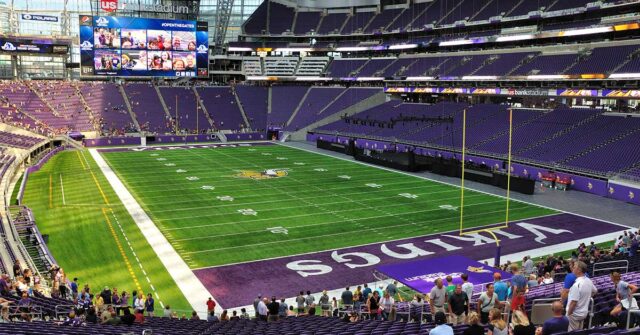
Metropolitan Stadium
From their inception in 1961 until 1981, the Vikings called Metropolitan Stadium home. Located in Bloomington, Minnesota, “the Met” was an outdoor stadium that hosted both baseball and football games.
It was known for its harsh winter weather conditions, which often played a role in the outcome of late-season games.
Mall of America Field at the Hubert H. Humphrey Metrodome
In 1982, the Vikings moved into the climate-controlled Hubert H. Humphrey Metrodome, also known as Mall of America Field. This indoor stadium, located in downtown Minneapolis, provided a more comfortable environment for players and fans alike.
The Metrodome was the team’s home until the end of the 2013 season, after which they temporarily relocated to TCF Bank Stadium while their new stadium was under construction.
Legacy of the Early Minnesota Vikings
The early years of the Minnesota Vikings were marked by memorable moments, iconic players, and enduring fan support. In this section, we’ll explore the team’s lasting impact on the NFL, as well as the legacy it built during its formative years.
Notable Players and Achievements
Throughout their early history, the Vikings were home to numerous talented players who left a lasting impact on the team and the NFL.
Hall of Famers such as Fran Tarkenton, Alan Page, Carl Eller, and Paul Krause all donned the purple-and-gold during this period. These players, along with many others, helped shape the franchise’s identity and set the stage for future success.
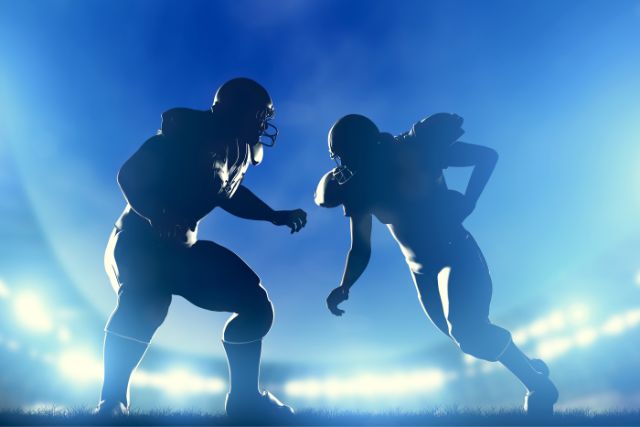
Influence on the NFL
The early success of the Vikings franchise had a significant influence on the NFL, both on and off the field. The team’s innovative strategies and coaching philosophies, combined with its iconic players, left a lasting impact on the game.
The Vikings’ defensive prowess, in particular, inspired other teams to invest in their defenses and adopt aggressive, hard-hitting playing styles.
Enduring Fan Support
From the very beginning, the Minnesota Vikings have enjoyed unwavering support from their dedicated fan base. Known for their passion and loyalty, Vikings fans have helped create a unique and electrifying atmosphere during home games.
The team’s early history laid the foundation for this enduring relationship between the franchise and its fans, which continues to thrive today.
Conclusion
The founding and early history of the Minnesota Vikings franchise is a fascinating story filled with memorable moments, iconic players, and hard-fought battles on the gridiron.
From their humble beginnings as an expansion team to their rise as one of the NFL’s most successful franchises, the Vikings’ journey is a testament to the perseverance, dedication, and teamwork that defines the spirit of professional football.
As the team continues to build upon its storied legacy, the early years of the Minnesota Vikings will forever remain an integral part of the team’s identity and the history of the NFL.








